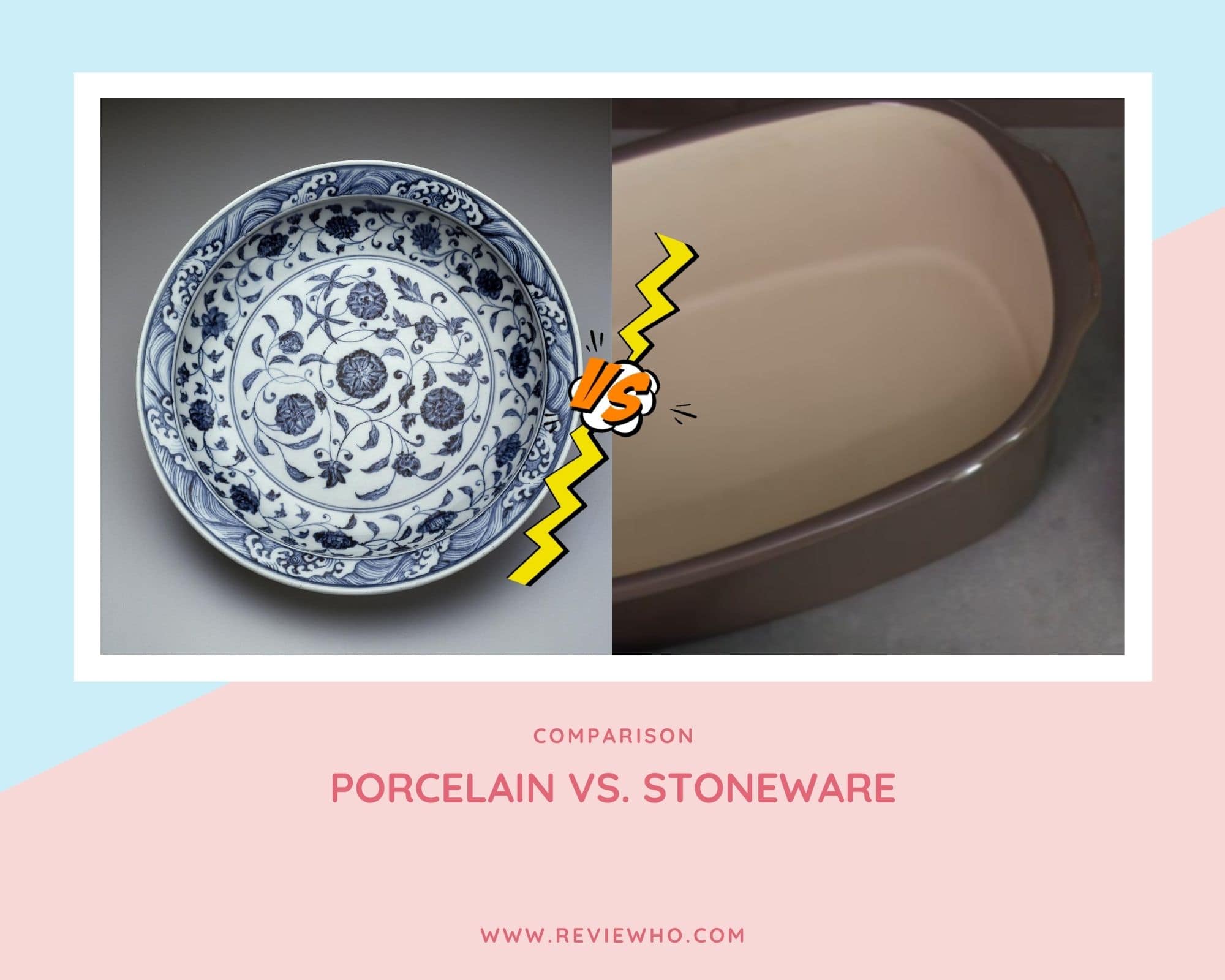All tableware are quite similar in appearance. In fact, it is possible to classify all of them as china without considering that there might be a difference between them. However, each dinnerware is different. There is a difference between stoneware and porcelain and it is very important to identify these differences before you choose one for your home.
Each of the dinnerware is beautiful and durable but making a good decision will depend on your knowledge of the differences. In this article, we highlight some of the main features that make each dinnerware unique. We have included some cons and pros of each type of dinnerware including the dinnerware durability.
An Overview
Before we focus on the main differences that come up in a stoneware vs. porcelain comparison, it is very important to understand what these dinnerware are, as well as how they are created.
Porcelain

The porcelain dinnerware is usually made using white clay. This white clay is refined to kaolin clay. Porcelain is usually made into fine items. It can also have several other materials mixed together with the refined clay. For instance, there can be silica, quartz, feldspar, glass, and many more. These additional ingredients are very useful in fortifying the clay mixture. When they are fired, they will produce a very strong result that will inhibit the same characteristics as enamel.
In general, the dinnerware durability is amazing. It has resistance to any thermal shock and in most cases, depending on the materials added to the kaolin clay, may be translucent. Unlike the other types of china, porcelain will have a tone similar to that of a bell when it is stricken slightly.
The true porcelain was developed and first used in China during the Tang Dynasty. This true porcelain is very hard. However, there is another type of porcelain that was discovered later in the European regions. This is the soft-paste porcelain and it is less hard than that discovered in China. This soft paste porcelain requires a glaze in order to become waterproof.
When you consider porcelain versus stoneware, you will discover that Porcelain has a delicate appearance and is usually thinner and lighter in regards to weight. Normally, it is reserved for parties and fancy dinners.
To make the porcelain dinnerware, the kaolin clay is fired at temperatures higher than 2300 degrees Fahrenheit. After being fired, a clear glaze is used to cover the dinnerware, helping to show the white color more prominently. Usually, no other color is used to paint the porcelain, mainly because the main attraction is the white color.
Related:
Stoneware


Stoneware is a type of ceramic dinnerware that has more durability since the clay used in its making is usually fired at very high temperatures. It usually has vitreous material, or glass, added to the ingredients to increase its strength. In a stoneware versus porcelain comparison, several factors come up. For instance, there is a difference in the color, the firing process, as well as the weight. You will also realize that although stoneware is durable and hard, it is less refined and less delicate compared to porcelain. It is also heavier than the other types of china.
Stoneware can have different finishes and colors depending on the materials used in its manufacture. Stoneware uses a different clay type and has one firing, which is at a single temperature level. This pottery type is one of the most popular and is used often in most households mainly because of its hard nature.
Most ceramic tableware in most households is stoneware. It is created using fine clay, coupled with feldspar, as well as silica. It is fired at temperatures ranging from 2150 degrees Fahrenheit to 2330 degrees Fahrenheit. Its source of durability is the high temperatures of firing, the mix of clay and other materials, as well as its thick build. Before being glazed, the dinnerware will inhibit certain color variations and patterns. It can be glazed in order to get a beautiful and colorful matte or a glossy finish. Stoneware is waterproof and opaque.
The Baking and Warming Differences
Bone china should not be used in a microwave or in a conventional oven. Instead, food should be prepared using the appropriate equipment, then moved to the bone china for storage or serving purposes. Stoneware and porcelain, on the other hand, can be used to bake or even warm food, which is an amazing similarity that comes up for porcelain vs. stoneware dishes.
It is important, however, to know that there should be no sudden changes in temperature. Instead, you should start the conventional oven at temperatures as low as 225 degrees Fahrenheit for a period of 10 minutes, after which you should put the dinnerware inside the oven, after which you should increase the temperature slowly to 350 degrees Fahrenheit. You should avoid using any wet clothes on the dinnerware because that would cause an immediate or sudden drop in temperature.
You should also make sure that the dinnerware cools completely before you can wash it or expose it to cold water or fluids. Neither the porcelain nor stoneware dishes can be used with direct heat. Even though you can use any of them in the microwave, you should follow the directions of the manufacturer.
You should also note that if porcelain happens to have a metal rim, you should not use it in a microwave. You should also avoid placing any acidic foods inside it because they would damage the metal.
Since the two, stoneware and porcelain are usable in a microwave or oven, they are more versatile compared to bone china. You should always consider how you will use the dinnerware before you decide to purchase it.
Choosing between Porcelain and Stoneware
Several considerations should be put in place before you choose a specific type of dinnerware.
First, you should think about the cost. Porcelain is usually more expensive than stoneware. Regardless, the designs and finishes that a dinnerware inhibits will be a determining factor for the cost.
The dinnerware’s use is also important. If you prefer to use it on a daily basis or for heating food, you should not consider an alternative such as bone china. Otherwise, if for special occasions, porcelain and bone china would be perfect because of the beauty.
After you considered a specific type of dinnerware, you should start thinking about the patterns. There are hundreds of options in this aspect. You should take the time to choose a perfect and appealing pattern for your kitchen.
Conclusion
There are numerous choices of dinnerware and it is important that you think about the stoneware vs. porcelain differences before you settle on one or the other. Consider how you intend to use the dinnerware and the cost, then look at the available patterns to find the one that entices you most.
Also, Read:
- French Skillet vs Frying Pan
- What Is The Difference Between Braiser vs Dutch oven?
- How To Clean Season Chef Stoneware?
Feel free to share your observations with me in the comments section!
Also, if you find the information in this post to be useful, be sure to share this post with your friends on Facebook, Twitter, and Pinterest!





Thank you… Good Info.
You’re welcome, Edna! So glad you found the post informative.